“Discover the fun of 5-pin bowling! With fewer pins than traditional bowling, this Canadian favorite offers a unique twist on the classic game. “pins number bowling: a Canadian twist on the classic game. Aim for strikes and spares with fewer pins. Fun for all ages!”. Aim for strikes extras as you roll the ball down the rear entryway, exploring the more modest, seriously testing arrangement. Ideal for all ages and ability levels, 5-pin bowling gives long periods of diversion to loved ones the same. Experience the fervor of thumping down those unmistakable pins and holding back nothing wonderful game.
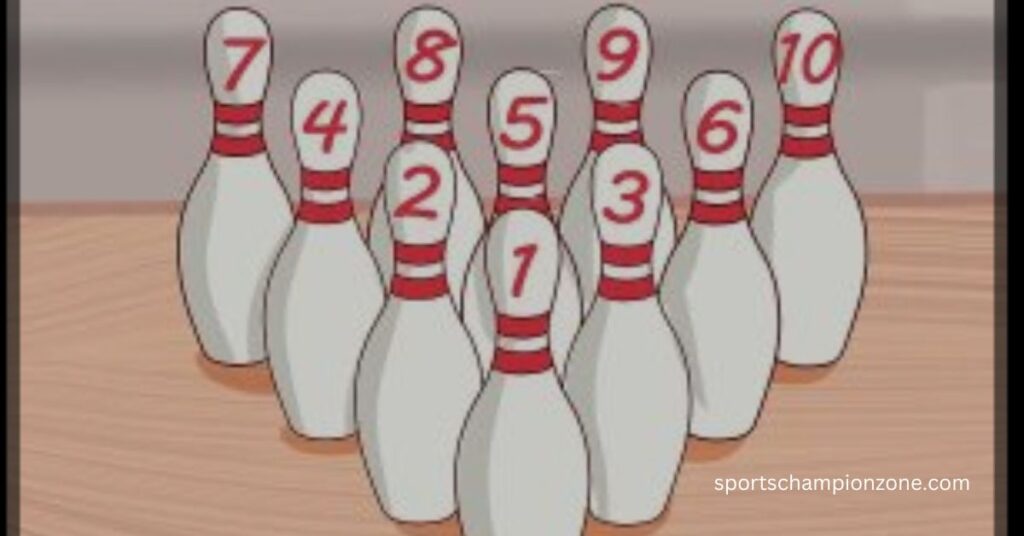
Understanding How Pins Number Bowling
Pins number bowling are something beyond targets; they’re numbered markers urgently needed for scoring and technique in the game. How about we plunge into how each pin is numbered and why it makes a difference in bowling.
Anatomy of Bowling Pins: Pins number bowling are the tall, thin items set up toward the end of a bowling path. They’re regularly made of wood or engineered materials, with a tightened top and base for solidness.
Numbering System: Each pin is doled out a number from 1 to 10, permitting players and scorers to handily distinguish them. The numbering framework follows a particular example, guaranteeing consistency across all lanes and games.
Headpin (Pin 1): The headpin, generally called the “one-pin,” is the fundamental pin in bowling. It stays at the actual front of the pin plan, clearly in the point of convergence of the three-sided improvement.
Back Line: Moving clockwise from the headpin, we experience the back segment of pins. These pins are numbered 2 through 5, with nail 2 to the passed on portion of the triangle and nail 5 to one side.
Center Line: Going on clockwise, we appear at the center section of Pins. These pins are numbered 6 through 9, with nail 6 aside and nail 9 aside.
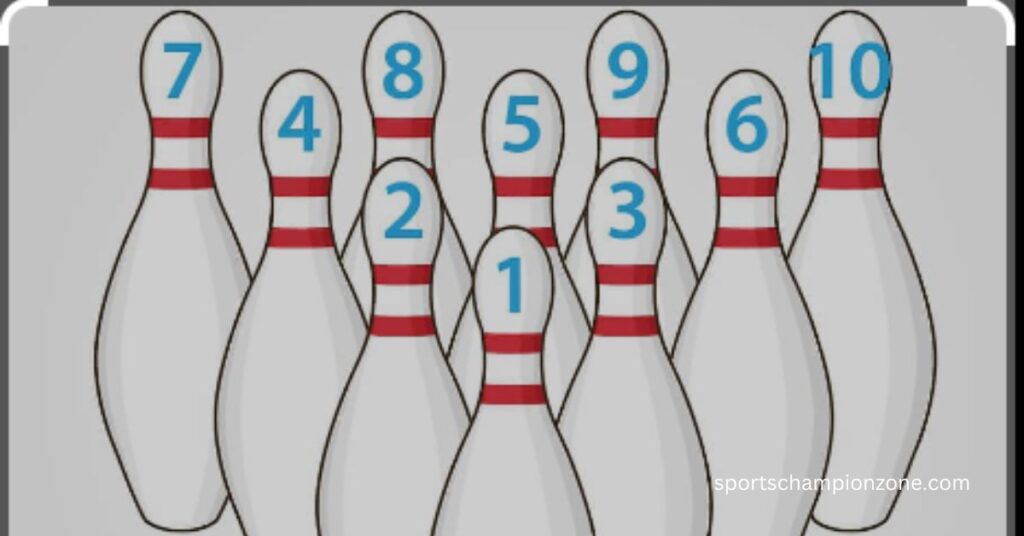
Corner Pins (Pins 7, 8, and 10): The corner pins can’t try not to be Pins 7, 8, and 10. Pin 7 is organized on the left half of the new development, nail 8 to the right, and pin 10 at the rear of the triangle.
Plan on the Path: Pins number bowling are coordinated in a three-sided improvement close to the completion of the path. In ordinary ten-Pins number bowling, there are ten pins coordinated in four segments, with one pin in the main line, two in the ensuing line, three in the third section, and four in the back line.
Numbering Pattern: The numbering of Pins number bowling follows a clockwise model, starting from the headpin (pin 1) and moving around the triangle in a clockwise bearing. The pins in the back line are numbered from left to right, starting with nail 7 on the left and getting done with nail 10 on the right.
Importance in Scoring: Understanding the numbering of Pins number bowling is essential for scoring the game exactly. Each pin pounded down gets a specific number of centers, and strikes and additional items depend upon the pin plan.
Strategy and Gameplay: Bowlers decisively hold back nothing founded on their situations to expand their scores. Whether going for the gold by raising a ruckus around town or holding back nothing by focusing on unambiguous pins, realizing how each Pins number bowling assists bowlers with pursuing informed choices.
Understanding Bowling Pins: A Beginner’s Guide
Bowling pins are the fundamental parts of the sport of bowling. Figuring out their plan, course of action, and intention is critical to dominating the game.
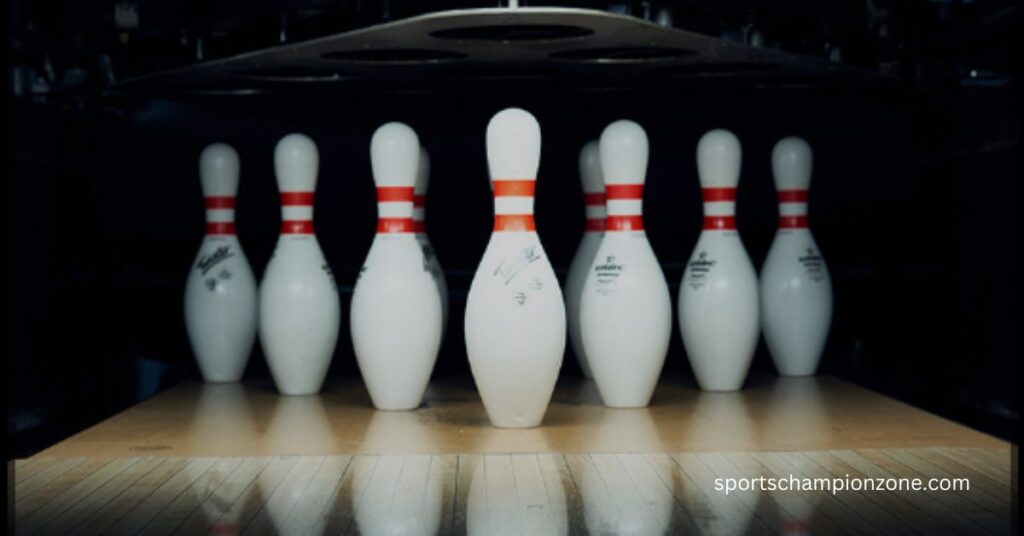
Arrangement On the Lane: Pins number bowling are organized in a three-sided development toward the finish of the bowling lane. In conventional ten-Pins number bowling, there are ten pins organized in four lines, with one pin in the first column, two in the subsequent line, three in the third line, and four in the back line.
Reason and Capability: The basic role of Pins number bowling is to act as a focus for the bowler to wreck with the bowling ball. Thumping down each of the ten pins on a solitary edge brings about a strike, while thumping down all excess pins after the primary roll procures an extra.
Scoring: Bowling pins assume a significant part in scoring the game. Each pin thumped down procures a specific number of focuses, with strikes and extras procuring extra focuses. Understanding what a pin game plan means for scoring can assist players with creating methodologies to amplify their scores.
Materials and Development: Pins number bowling are commonly made of hardwood, like maple, or manufactured materials like plastic. They are intended to endure the effect of the bowling ball while keeping up with dependability and equilibrium on the lane.
Maintenance and Replacement: Bowling pins go through standard support to guarantee they stay in great shape for interactivity. Pins that become damaged or broken down are supplanted to keep up with reliable interactivity and scoring precision.
Nine-Pin Bowling: Nine-pin bowling is a charming variation of bowling that offers a slight wind in the exemplary ten-pin game. Beginning in Europe, it has acquired prominence for its particular pin design and ongoing interaction.
Pin Design: In nine-pin bowling, players aim to thump down nine pins organized in a precious stone shape toward the finish of the path. The pins are set up in a jewel design, with one pin at the front, two in the center column, and three at the back, framing a precious stone shape.
Gameplay: Like customary bowling, players alternate moving a bowling ball down the path to thump down the pins. Every player regularly gets two rolls for each casing to attempt to thump down every one of the nine pins. As in ten-pin bowling, strikes and extras are vital to amplifying focus.
Scoring: Scoring in nine-pin bowling follows a comparative standard to conventional bowling, with players procuring focuses in view of the quantity of pins they wreck. Strikes and extras procure extra focus, adding energy and methodology to the game.
Origin: Nine-pin bowling has a rich history, starting in Europe hundreds of years prior. It was at first played outside on hard surfaces, yet current variants are played inside on uniquely planned paths.
Popularity: While not generally so broad as conventional ten-pin bowling, nine-pin bowling has a committed following, especially in European nations like Germany and Austria. It offers a remarkable and pleasant bowling experience for players of any age and expertise levels.
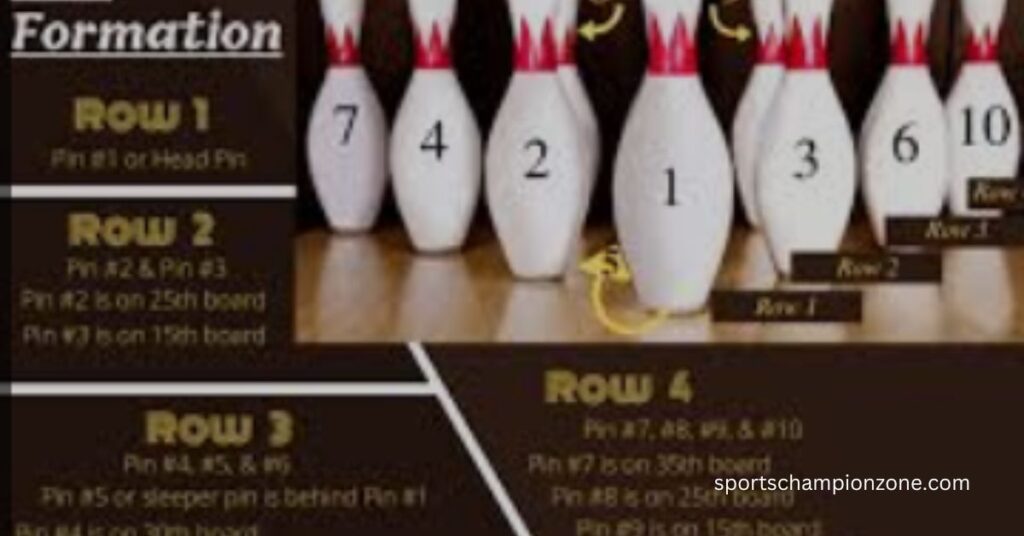
Bowling Pins Number
The standard numbering of Pins number bowling in ten-pin bowling is as per the following:
1. Headpin: Otherwise called the “one-pin,” situated at the front of the pin arrangement.
2. pin: Positioned to the immediate left of the headpin.
3. pin: positioned to the immediate right of the headpin.
4. pin: Positioned behind the 2-pin.
5. pin: Positioned behind the 3-pin.
6. pin: Positioned behind the 4-pin.
7. pin: Positioned behind the 2-pin, in the left corner of the triangle.
8. pin: Positioned behind the 3-pin, in the right corner of the triangle.
9. pin: Positioned behind the 5-pin, in the right corner of the triangle.
10. pin: Positioned behind the 4-pin, at the back of the pin setup.
This numbering framework helps bowlers and scorers effectively recognize each pin’s situation and adds to exact scoring and interactivity.
Where Should the Bowling Ball Hit the Pins?
Knowing where to point your bowling ball is pivotal for thumping down pins successfully and amplifying your score. In this aide, we’ll investigate the best objective regions for raising a ruckus around town and methodologies to further develop your bowling match-up.
Understanding the Pin Effect: Where your bowling ball connects with the pins can fundamentally influence the result of your shot. By focusing on unambiguous region of the pin arrangement, you can build your possibilities by accomplishing strikes and extras.
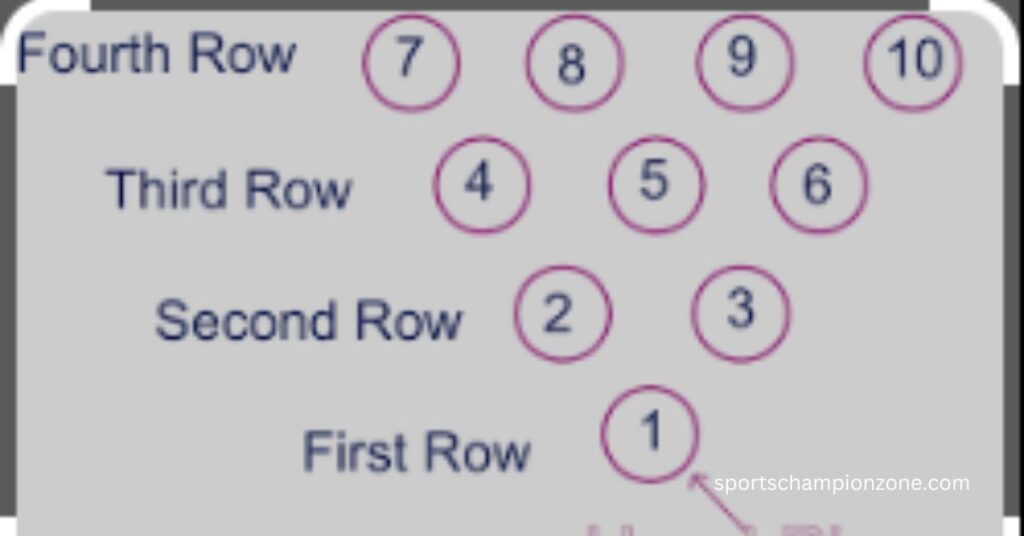
Headpin (Pin 1): The headpin, situated at the front of the pin arrangement, is the essential objective for bowlers intending to score strikes. Pointing straightforwardly at the headpin improves the probability of thumping down every one of the pins in a single roll, bringing about a strike.
Pocket Hits: A pocket hit happens while the Pins number bowling connects with the pins at a point that boosts pin activity. The ideal pocket hit focuses on the 1-3 (right-gave bowlers) or 1-2 (left-gave bowlers) pocket, where the ball raises a ruckus around town at a point that makes a chain response, thumping down encompassing pins.
Brooklyn Hits: A Brooklyn hit happens when the ball moves over to the contrary side of the headpin, stirring things up around town 2 (right-gave bowlers) or 1-3 (left-gave bowlers) pocket. While not quite as normal as pocket hits, Brooklyn hits can, in any case, bring about strikes or great pin activity.
Saves: While going for the gold, frequently target explicit pins in light of their position compared to the excess pins. By pointing somewhat askew to take out single pins or changing their way to deal with convert testing spare mixes, bowlers can build their extra transformation rate.
Adjusting for Lane Conditions: Path conditions, for example, oil samples and path geology, can affect ball movement and pin activity. Bowlers might have to change their objective regions and ball speed to oblige changing path conditions and augment pin convey.
Practice and Experimentation: Further developing precision and consistency in pin focusing requires practice and trial and error. Bowlers can refine their pointing strategies through customary practice meetings, trying different things with various objective regions and changing their methodology in light of criticism from each shot.
Bowling Pin Numbers: History While the exact history of Pins number bowling isn’t broadly archived, it’s generally perceived that the numbering framework for bowling pins has developed close to the actual game. Here is a concise outline of the historical backdrop of bowling pin numbers:
Early Origins: Bowling has been played in different structures for quite a long time, with records of comparable games Notwithstanding, current bowling, as far as we might be concerned today, started to come to fruition in Europe during the Medieval times.
Development of Pin Numbering: As bowling turned out to be more normalized in the nineteenth century, especially in the US, a numbering framework for bowling pins was laid out. This numbering framework probably grew naturally to work with scoring and ongoing interaction.
Triangular Pin Setup: The Triangular Pin Setup, comprising ten pins organized in a particular development, turned into the standard setup for ten-pin bowling. Each pin was relegated to a number in light of its situation inside the triangle.
Consistency Across Lanes: To guarantee decency and consistency across various bowling alleys and paths, a normalized numbering framework was taken on. This system guaranteed that each pin was numbered reliably, no matter what the bowling alley’s area or arrangement.
Refinement and Modernization: After some time, refinements were made to the numbering framework to further develop precision and lucidity. Today, bowling pin numbers are all around perceived and utilized in bowling alleys around the world.
While the particular subtleties of the historical backdrop of Pins number bowling may not be widely recorded, obviously the numbering framework played a pivotal impact in the turn of events and normalization of the sport of bowling. Whether you’re a relaxed bowler or a serious player, understanding the numbering of bowling pins is fundamental for scoring and planning successfully on the paths.
What are bowling pin numbers?
Bowling pin numbers suggest the numeric characteristics consigned to each stick in a standard bowling plan. There are ten pins, out and out, numbered from 1 to 10. Each pin has its own allocated number, with the headpin being number 1 and various pins numbered successively from left to right and back. These numbers are essential for scoring in bowling, as they choose the centers obtained while pounding down pins during a game.
Are there 10 or 12 pins in bowling?
In standard bowling, there are 10 pins. Regardless, a couple of assortments of the game, like candlepin bowling and duckpin bowling, use 12 pins. The most notable sort of bowling played in many back roads by and large is the 10-pin bowling, where players intend to pound down all of the 10 pins with a bowling ball. Each pin pounded down secures centers, and the game contains ten housings, with players substituting to bowl in each edge.
is a 10 pin spare in bowling?
To pins 10 p bowl, stand at the foul line, holding a bowling ball. Hold nothing back of the triangle of pins near the finishing of the way. Push ahead and swing the ball back behind you, then, forward, conveying it toward the pins. Desire to create a ruckus all through town, organized in the middle, as it assists with beating down different pins around it. Rehash for each edge, trying to pound down every one of the 10 pins in two rolls called a “outline.” The most ridiculous score per outline is 10, and a game contains 10 lodgings.
What is a 10 pin spare in bowling?
A 10-pin spare in bowling happens when a player pounds down all of the pins in the second roll of a packaging after not hitting all of them in the essential roll. It unequivocally suggests pounding down every one of the 10 pins with the second heap of the packaging, resulting in somewhere near an excess in the chief ball. To achieve an extra, the player ought to pound down the overabundance pins with their ensuing roll, obtaining extra core interests. This adds unpredictability to the game and requires key pointing and precision
Conclusion:
In conclusion, while the specific verifiable subtleties of Pins number bowling numbering might be fairly dark, it’s obvious that the development of the numbering framework has been firmly entwined with the turn of events and normalization of bowling as a game. From today’s starting points in Europe to its boundless prominence, bowling has depended on a steady and generally grasped framework for numbering pins.
This framework works with scoring and ongoing interaction, as well as guarantees reasonableness and consistency across various bowling alleys and paths. Whether you’re a relaxed bowler partaking in a night out with companions or a cutthroat player holding back nothing game, the numbering of bowling pins stays a fundamental part of the game, directing players as they continued looking for strikes, extras, and high scores on the lanes.
If you want to more detail and better information about this you can also visit:
